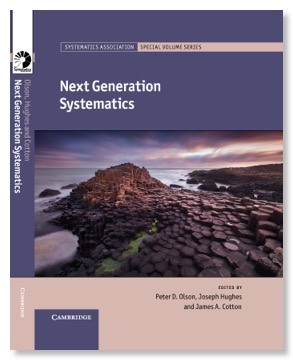Next Generation Systematics

We live in an age of ubiquitous genomics. Next generation sequencing (NGS) technology, both widely adopted today and advancing at pace, has transformed the data landscape, opening up an enormous source of heritable characters to the comparative biologist. Its impact on systematics, like many other fields of biology, has been felt throughout its breadth: from defining species boundaries to estimating their evolutionary histories.
This volume examines the broad range of ways in which NGS data are being used in systematics and in the fields that it underpins, from biodiversity prospecting to evo-devo. The authors draw on contemporary case studies to demonstrate state-of-the-art applications of NGS data. These, along with novel analyses, comprehensive reviews and lively perspectives are combined to produce an authoritative account of contemporary issues in systematics that have been advanced and impacted by the recent adoption of NGS.
Peter D. Olson is a Researcher in the Department of Life Sciences at the Natural History Museum, London. His research integrates comparative, developmental and genomic studies of parasitic flatworms aimed at unravelling the genetic basis of their evolution. He became involved in the field of molecular phylogenetics when PCR and manual sequencing were being widely used to generate the first ribosomal-based estimates of animal phylogeny.
Joseph Hughes is an evolutionary biologist working at the Medical Research Council – University of Glasgow Centre for Virus Research. He is particularly interested in understanding the evolutionary forces that have shaped the solutions that different species have found to adapt to their environment. He has embraced the deluge of data from high throughput sequencing platforms and currently works on non-living particles known as viruses.
James A. Cotton is a Senior Staff Scientist in the Parasite Genomics group at the Wellcome Trust Sanger Institute. His background is in phylogenetic theory and methods, and he now leads projects on comparative, evolutionary and population genomics of parasites of medical and veterinary importance.

The Systematics Association Special
Volume 85
Next Generation Systematics
Edited by
Peter D. Olson
Natural History Museum, London
Joseph Hughes
University of Glasgow
James A. Cotton
Wellcome Trust Sanger Institute, Cambridge
Contents
List of contributors
Introduction: studying diversity in an age of ubiquitous genomics
James A. Cotton and Peter D. Olson
Part I Next generation phylogenetics
1 Perspective: Challenges in assembling the ‘next generation’ tree of life
Michael J. Sanderson
2 The role of next-generation sequencing technologies in shaping the future of insect molecular systematics
Joseph Hughes and Stuart Longhorn
3 Phylogenomics of Nematoda
Mark Blaxter, Georgios Koutsovoulos, Martin Jones, Sujai Kumar and Ben Elsworth
4 High throughput multiplexed mitogenomics for metazoans—prospects and limitations
Peter G. Foster, Maria A. Stalteri, Andrea Waeschenbach and D. Timothy J. Littlewood
5 Investigating bacterial microevolution through next-generation sequencing
Josephine M. Bryant and Simon R. Harris
Part II Next generation biodiversity science
6 Perspective: Après le déluge: ubiquitous field barcoding should drive 21st century taxonomy
Richard M. Bateman
7 Perspective: Biodiversity and the (data) beast
Holly M. Bik and W. Kelley Thomas
8 Next generation biodiversity analysis
Mehrdad Hajibabaei and Ian King
9 Protist systematics, ecology and next generation sequencing
David Bass and Thomas Bell
Part III Next generation challenges and questions
10 Perspective: Systematics in the age of genomics
Antonis Rokas
11 Perspective: The role of next generation sequencing for integrative approaches to evolutionary biology
Ralf J. Sommer
12 Next-generation apomorphy: the ubiquity of taxonomically restricted genes
Paul A. Nelson and Richard J. A. Buggs
13 Utilizing next generation sequencing for evo-devo study of plant traits
Rachel H. Walker, Paula J. Rudall and Beverley J. Glover
14 An NGS approach to archaeobotanical museum specimens as genetic resources in systematics research
Oliver Smith, Sarah A. Palmer, Rafal Gutaker and Robin G. Allaby
15 From sequence reads to evolutionary inferences
James A. Cotton
Index